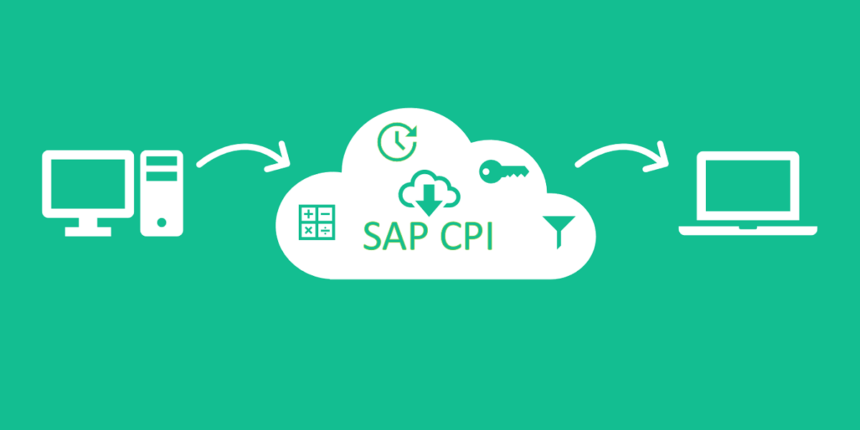Introduction
SAP Cloud Platform Integration (CPI) is a cloud-based service that enables seamless integration between diverse applications, both SAP and non-SAP, across cloud and on-premise environments. It plays a critical role in streamlining data flow, automating business processes, and enhancing operational efficiency. With features like pre-built integration content, real-time monitoring, and strong security, CPI empowers organizations to connect systems, reduce integration complexity, and drive digital transformation. One can join the Online Course for SAP to learn more about SAP CPI.
What Is SAP?
SAP (Systems, Applications, and Products in Data Processing) is a leading enterprise resource planning (ERP) software developed by the German company SAP SE. It helps organizations manage business operations and customer relations through integrated modules that cover various functions, such as finance, human resources, supply chain, manufacturing, and sales.
SAP’s modular architecture allows companies to customize their solutions based on specific needs, making it suitable for businesses of all sizes across different industries. Key products include SAP S/4HANA, an intelligent ERP suite designed for real-time data processing and analytics.
SAP systems facilitate data sharing and collaboration across departments, leading to improved efficiency, data accuracy, and decision-making. By leveraging advanced technologies like machine learning and artificial intelligence, SAP enables organizations to innovate and adapt to changing market demands. Its widespread adoption makes it a critical tool for many enterprises worldwide.
All About CPI In SAP
CPI, or Cloud Platform Integration, is a cloud-based integration service offered by SAP to facilitate the seamless exchange of data between different applications and systems, both on-premise and in the cloud. It plays a crucial role in modern enterprise landscapes, enabling organizations to connect SAP and non-SAP applications efficiently.
CPI supports various integration scenarios, including process integration, data integration, and API management. With its user-friendly interface, users can design, deploy, and monitor integration flows without extensive coding knowledge.
Key features include pre-built integration content for common business processes, a wide range of adapters for connecting different systems, and tools for message transformation and routing.
CPI also emphasizes security and compliance, ensuring data integrity and confidentiality during transmission. Overall, it helps businesses streamline operations, enhance collaboration, and gain better visibility into their processes, contributing to improved decision-making and agility.
SAP CPI Components And Features
SAP Cloud Platform Integration (CPI) is designed to facilitate seamless connectivity and integration between various on-premise and cloud-based applications.
Here are its key components and features. One can also check the SAP Certification Cost and join a training program for more information.
Components
- Integration Flows: These core components define how data is processed and transferred between systems. Users can design these flows using a visual interface, allowing easy mapping of data sources and destinations.
- Adapting and Transformation: CPI provides various adapters to connect with different systems (e.g., SAP, non-SAP, and third-party applications). It supports the transformation of data formats through built-in functions, making it easier to align disparate data structures.
- Message Processing: CPI handles message routing, message mapping, and transformation through pre-defined and customizable features. This ensures that data is processed according to specific business rules.
- Pre-packaged Content: SAP offers a library of pre-built integration templates for common business scenarios, such as SAP SuccessFactors with SAP S/4HANA, which accelerates implementation and reduces development time.
Features
- User-friendly Interface: CPI’s web-based interface simplifies the integration design process. Drag-and-drop functionality allows users to create integration flows without extensive programming knowledge.
- Monitoring and Analytics: Real-time monitoring tools enable users to track the status of integration flows, identify issues, and generate reports, facilitating better operational oversight.
- Security: CPI incorporates robust security features, including encryption and authentication mechanisms, to ensure data integrity and compliance with regulatory standards.
- API Management: It includes tools for API management, allowing businesses to expose, secure, and manage their APIs effectively, enhancing interoperability between applications.
- Scalability: Being cloud-based, CPI can easily scale to accommodate growing data volumes and integration needs, supporting organizations as they expand their digital landscapes.
Overall, SAP CPI provides a comprehensive platform for integrating applications and promoting efficiency and collaboration across various business processes.
Why Is It Important?
SAP Cloud Platform Integration (CPI) plays a crucial role in modern enterprise architecture, enabling businesses to thrive in a rapidly evolving digital landscape. Aspiring SAP professionals may check the Online Course for SAP to learn more about CPI.
Here are several reasons why CPI is important:
1. Seamless Connectivity
CPI facilitates seamless integration between diverse applications, whether they are cloud-based or on-premise. This connectivity is vital for organizations that use multiple software solutions (e.g., ERP, CRM, HR systems) to streamline processes and eliminate data silos.
2. Enhanced Data Flow
With CPI, data can flow freely between systems, ensuring that information is up-to-date and accessible. This real-time data exchange supports better decision-making and operational efficiency, allowing businesses to respond swiftly to market changes and customer demands.
3. Process Automation
CPI automates repetitive tasks by integrating various business processes. This automation not only reduces manual effort and errors but also enhances productivity. Employees can focus on strategic tasks rather than time-consuming manual data entry.
4. Cost-Effectiveness
By leveraging pre-packaged integration content and user-friendly tools, organizations can significantly reduce development time and costs associated with building custom integrations. This results in a quicker return on investment (ROI) and lower overall integration expenses.
5. Flexibility and Scalability
CPI’s cloud-based nature offers flexibility and scalability to adapt to changing business needs. As organizations grow or undergo digital transformation, CPI can easily accommodate increased integration requirements without significant infrastructure changes.
6. Security and Compliance
With robust security measures and compliance capabilities, CPI ensures that sensitive data is protected during integration processes. This is particularly important in regulated industries where data security and compliance with regulations (e.g., GDPR) are paramount.
7. Support for Innovation
By integrating various systems and applications, CPI enables organizations to harness the power of advanced technologies such as machine learning and artificial intelligence. This integration fosters innovation and helps companies stay competitive in their respective markets.
Thus, SAP CPI is essential for organizations aiming to enhance their operational efficiency, improve data accessibility, and drive digital transformation initiatives. Its role in fostering seamless connectivity and process automation makes it a vital tool for modern enterprises. The SAP Certification Cost is nominal and provides complete guidance to aspiring professionals.
Conclusion
SAP Cloud Platform Integration (CPI) is essential for modern enterprises, enabling seamless connectivity, real-time data flow, and process automation. Its scalability, security, and flexibility drive cost-effective integration across cloud and on-premise systems, fostering innovation and improving operational efficiency in an increasingly digital business landscape.


